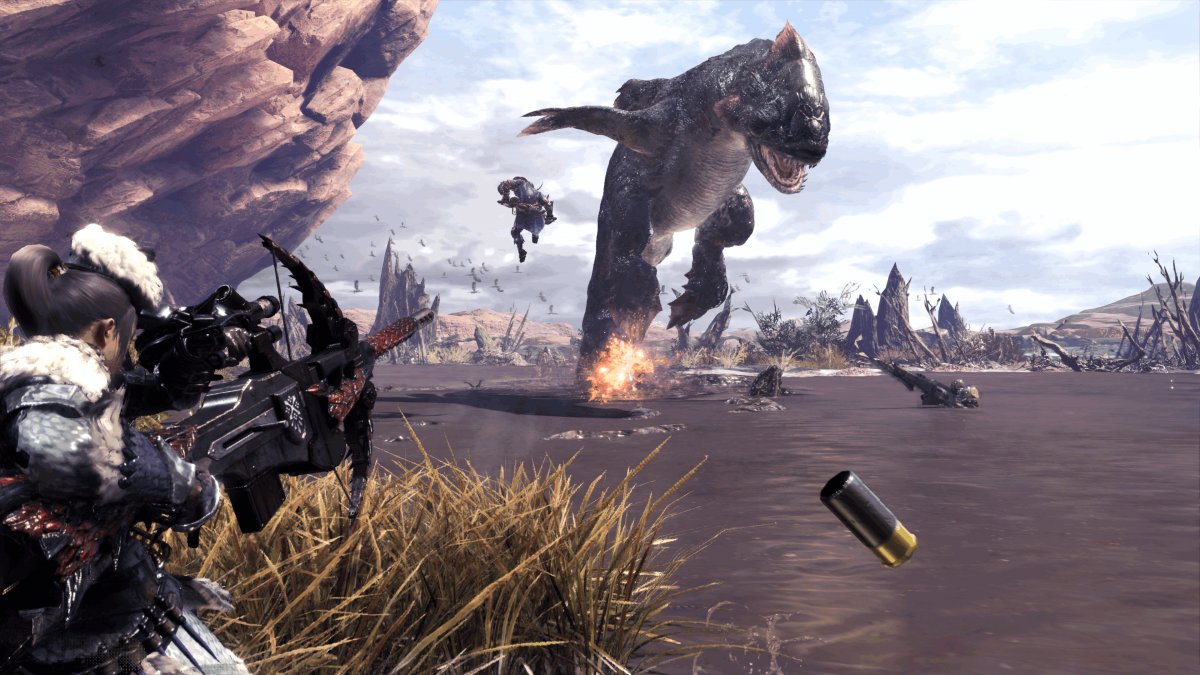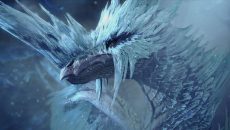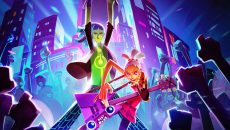“World” is the first “Monster Hunter” game to be released simultaneously in Japan, Europe and the U.S. (Photo courtesy of Capcom).
Vernon Gibbs
Connector Staff
“Monster Hunter: World” is a game that is rich with detail and challenge in equal measure. Released worldwide on Jan. 26, “World” is the ninth installment in its series that has reached the west. “World” takes the pre-established concept of the “Monster Hunter” series and enhances it in every known way. The player takes up arms as a hunter, journeying to the expansive New World and bearing witness to nature’s glory while trying to not get killed by it.
“World,” while making strides, is also loyal to the traditional “Monster Hunter” formula. An action role-playing game (RPG) at its core, the hunter must challenge the insurmountable threats of the local wildlife. Progression is not tied to any level system, instead being shown through getting better equipment and the player’s own skill. With 14 separate weapon types to choose from, the player will never feel uncomfortable with whatever playstyle they use. They can play aggressive with the dual blades, wait for an opening with the lance, attack from afar with the bow and use many other playstyles over the course of a single hunt. The differences between each weapon can make or break an experience, and such a situation is handled wonderfully with this system.
But one cannot be a “Monster Hunter” without a monster to hunt. “World” features 20 all-new monsters, varying in both difficulty and characteristics. Whether the player is on a jolly slaughter of the local Jagras, or running in terror from the fire-breathing Ajanath, they each provide a different kind of hunt for the player. “World” focuses heavily on improving the hunting experience, turning the barren arenas of previous games into a fleshed out environment. Environmental hazards now play a role in every hunt, both threatening the player’s safety and offering a plan of attack against a nearby monster. The hunter can use the hazards as traps, pit the monsters against each other or even just throw rocks at it. This newfound mechanic breaths fresh air back into “Monster Hunter,” providing a new and interesting hunt for both the veteran and greenhorn.
When the monster eventually falls, its hide torn and broken, the hunter is rewarded with the materials of the very beast they took down. It is here that the long-term appeal of “Monster Hunter” begins, where the player wonders what they could do when they take their loot and turn it into something new. The scales of the fire-breathing dragon, Rathalos, could become the player’s next weapon, imbued with the same fiery power. Those very scales could also become a pair of gloves, carrying with it the rugged defense of its predecessor. Every kill on the hunter’s list marks an opportunity for change, and to take their spoils on the next hunt. “Monster Hunter” is known for its long runtime, and this system is the reason why.
With “World’s” leap from Nintendo’s handhelds to Sony’s Playstation 4, it is able to astound the player with its visuals. With this upgrade came a shift in art style, taking full advantage of its new platform with more detailed designs. It is not realistic, but “Monster Hunter” was never meant to be that. The more stylized elements accent this game’s aesthetic nicely, and achieve the breathtaking graphics without losing its charm. “World’s” soundtrack is slightly weaker and less pronounced than the games before it, but it also serves in emphasizing the beauty of its world over its bombastic fights. If one is a stickler for appearance, then “World” is the choice to pick.
Despite all the good things “World” has brought to the series, there are still some minor grievances that hold it back from a perfect score. Monsters are more prone to fleeing than in previous titles, and this combined with the larger map sizes can lead to a hunt becoming a wild goose chase. “World” takes steps in making the series more accessible for newcomers, and has ironed out certain mechanics that only adds to a greenhorn’s confusion. But with every mechanic smoothed out, there are two more that “World” added. Information overload is a very real problem when first entering the “Monster Hunter” series, and “World” failed to make a noticeable impact in lowering the bar for entry. This struggle to understand the game can be a major turn-off for a player, and may lead to them dropping the game altogether.
“Monster Hunter” has been a hit series in Japan, but had struggled with gaining a western audience. Ultimately, “World” was made with the intent to fix this problem, and to grow its community as a whole. To that end, “World” has become the biggest selling title in the series, and is sure to be the reason for more “Monster Hunter” games to come. Should one pick this game up, the story can be completed in 50-60 hours.
Final score: A




